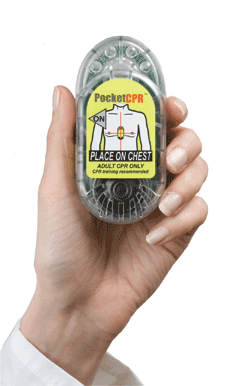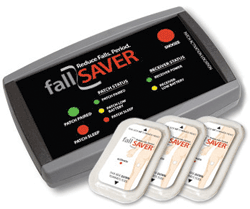Devices such as DSPs and accelerometers make possible home monitoring of heart, lungs, and more
BY PAUL ERRICO
Analog Devices, Norwood, MA
http://www.analog.com
Sophisticated semiconductor technology is paving the way for development of increasingly smaller and more powerful medical devices for use in the home. For patients, the benefits of smaller, portable devices translate into easier access to care, fewer hospital visits, and reduced medical costs. In order to be effective in the home environment, medical devices must be easy to use, safe even under misuse conditions, and able to distinguish between correct results and those obtained by incorrect procedures.
The rise in home healthcare
The need for home healthcare devices is expanding due to the increasing number of aging baby boomers who require intensive home care. According to the World Health Organization, the worldwide number of persons aged 60 and older was 650 million in 2006. This figure is expected to reach 1.2 billion by 2025. In the United States, people 65 and older now comprise a greater share of the population than ever before and this number is expected to steadily increase during the 21st century.
Examples of home healthcare devices enabled by semiconductor technology include the Wholter, an overnight pulmonary monitor, and the Wheezometer, a personal asthmatic assessment device. Both were developed by Karmelsonix, a company based in Israel and a pioneer in medical device development for asthma management. The Wholter and Wheezometer address the critical need of more than 48 million asthma sufferers worldwide to self-assess and manage their threatening asthma symptoms — a capability available previously only at clinician’s offices or hospitals.
Effective asthma assessment, a multivariable lung activity determination, must be both immediate and accurate for proper medical treatment to be administered. In the past, this level of instrumentation reliability existed only in Spirometer technology, located in hospitals or physicians’ offices, putting at home or in-transit asthma patients at risk.
To take this critical patient care from the institution to the home, Karmelsonix used high-speed Blackfin digital signal processors (DSPs) and precision signal-processing components from Analog Devices in these products to ensure that asthma suffers can obtain an accurate, reliable assessment of their “wheeze rate,” a dynamic, but significant asthmatic attack indicator. Asthmatics can use the Wholter and Wheezometer for early self-assessment of symptoms, which is essential for proper medication.
Enabling semiconductor tech
Many home-health support devices are much simpler in function, but just as critical for saving lives and preventing accidents. PocketCPR (see Fig. 1 ) from Bio-Detek, a wholly owned subsidiary of Zoll Medical, is placed under the hand of a person administering cardiopulmonary resuscitation to a heart attack victim.
The device measures the depth of the chest compressions, providing audible and visual feedback to the rescuer to allow adjustment to proper depth and to the correct rate. This product also gives instruction to a relatively inexperienced rescuer to instill confidence as well as aiding experienced care-givers with proper technique. The PocketCPR is enabled by Analog Devices’ ADXL311 accelerometer, which makes precise measurements of the movement of the PocketCPR under the rescuers hand.

Fig. 1. Analog Devices’ ADXL311 accelerometer enables the PocketCPR device.
Perhaps even simpler, the FallSaver (see Fig. 2 ) is used with patients who should not be allowed to move about without help. Caregivers cannot be present at all times to monitor bedridden patients, who may choose to get up and move about at any time either from dementia or choosing not to bother the caregiver, which then often leads to a debilitating fall, whether in a hospital, at home, or in a nursing home.
The small FallSaver patch is attached to the thigh of the patient for up to two weeks and provides continuous monitoring of the movements of the patient, especially determining movements that indicate an attempt to stand and move about. The FallSaver unit then sounds an alarm and sends a radio signal to the nurse call station or radio carried by the caregiver; the caregiver will be able to get to the bedside to aid with the intended movements before a fall occurs. It is the only device to have ever been shown in clinical trials to significantly reduce falls and fall-related injuries in this high-risk population.
The FallSaver is also enabled by the ADXL323 and ADXL335 accelerometers, which provide the motion information in digital format, allowing quick algorithmic analysis of movement patterns. In addition to the previously mentioned accelerometers, next generation three-axis accelerometers offer even high levels of functionality at lower power and size, such as Analog Devices’ ADXL345 and ADXL346.

Fig. 2. The FallSaver is enabled by the ADXL323 and ADXL335 accelerometers, which provide the motion information in digital format.
Two key aspects of future home-healthcare devices are connectivity and power. For many situations, the ability to accurately communicate clinical readings from diagnostic devices to healthcare professionals is equally vital as the ability for the patient to self-care, as in diabetes management. For example, a current ECG (electrocardiogram) waveform can only be provided to a clinician as a printout or a signal transmitted through an electronic communication channel.
Historically, to achieve this, the ECG instrument would need to be connected directly to the computer, which then subjects the patient to the potential of electrical hazards. The recent introduction of the Analog Devices ADuM4160 USB isolator can overcome this issue by providing full electrical isolation of the patient from the computer and network while still enabling a full-capability ECG and enabling computer connectivity.
The measurement front-end also requires a small amount of power to drive the amplifiers and data converters used to acquire and digitize the ECG signals. Isolated power is provided by the ADuM5000 dc/dc converter, which eliminates the need for battery charging and replacement. Devices of this sort will also enable the design of many home-health devices requiring direct electrical contact to the patient, and also the ability to connect directly to a computer through USB, thus providing a full capability for storage, analysis, and transmission of results. These technologies will also make it simpler for the medical designer to meet the latest requirements of IEC60601.
By developing innovative ICs, semiconductor companies are improving the quality of healthcare for patients throughout the world. Medical design engineers creating the latest home healthcare systems aimed at disease management, health and wellness, and drug delivery are using semiconductors as the foundation to invent products that change lives.
Much of the progress in semiconductor design for portable and home-health products borrows from the great strides made in making other forms of portable consumer products, such as cell phones and media players. This applies especially to the areas of power management, motion detection, and RF transmission. But expertise in precision signal amplification, conversion, and processing is still essential to proper detection and analysis of low-level, complex clinical information.
These developments are also enabled, promoted, and certified by the Continua Health Alliance, which is a nonprofit, open industry coalition of the finest healthcare and technology companies joining together in collaboration to improve the quality of personal healthcare. With more than 200 member companies around the world, Continua is dedicated to establishing a system of interoperable personal health solutions with the knowledge that extending those solutions into the home fosters independence, empowers individuals, and provides the opportunity for truly personalized health and wellness management. The Continua Health Alliance is also setting design standards as well as providing certification to those standards, thereby instilling confidence in healthcare providers and consumers in their selection and use of devices provided under this program.
The growing demand for home-use medical devices is making systems requirements progressively complex and demanding for medical equipment designers who must reduce the size, improve ease of use, and increase the performance of next-generation portable medical devices. These new system-level demands mean that analog semiconductor manufacturers must rise to the challenge of developing breakthrough building-block ICs that make the design of next-generation products possible. Design development has underscored how developing future innovative capabilities for medical devices is increasingly dependent on the continuous and effective sharing of information between both system and analog IC designers. ■
Advertisement
Learn more about Analog Devices





